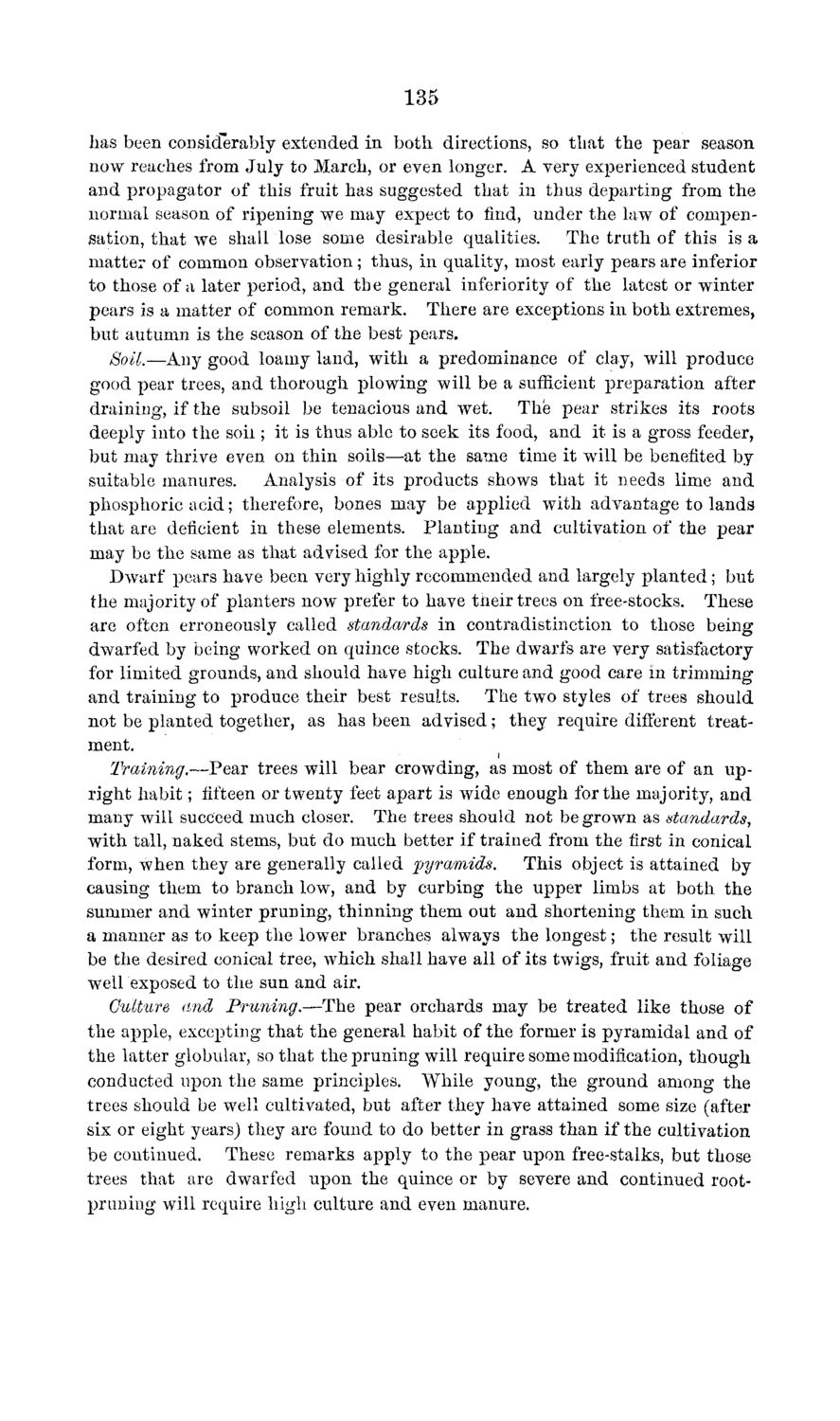| |
| |
Caption: Board of Trustees Minutes - 1869
This is a reduced-resolution page image for fast online browsing.

EXTRACTED TEXT FROM PAGE:
135 has been considerably extended in both directions, so t h a t the pear season now reaches from J u l y to March, or even longer. A very experienced student and propagator of this fruit has suggested that in thus departing from the normal season of ripening we may expect to find, under the law of compensation, that we shall lose some desirable qualities. The t r u t h of this is a matter of common observation; thus, in quality, most early pears are inferior to those of a later period, and the general inferiority of the latest or winter pears is a matter of common remark. There are exceptions in both extremes, but autumn is the season of the best pears. Soil.—Any good loamy land, with a predominance of clay, will produce good pear trees, and thorough plowing will be a sufficient preparation after draining, if the subsoil be tenacious and wet. The pear strikes its roots deeply into the soil; it is thus able to seek its food, and it is a gross feeder, but may thrive even on thin soils—at the same time it will be benefited by suitable manures. Analysis of its products shows that it needs lime and phosphoric acid; therefore, bones may be applied with advantage to lands that are deficient in these elements. P l a n t i n g and cultivation of the pear may be the same as that advised for the apple. Dwarf pears have been very highly recommended and largely p l a n t e d ; but the majority of planters now prefer to have their trees on free-stocks. These are often erroneously called standards in contradistinction to those being dwarfed by being worked on quince stocks. The dwarfs are very satisfactory for limited grounds, and should have high culture and good care in trimming and training to produce their best results. The two styles of trees should not be planted together, as has been advised; they require different treatment. Training.—Pear trees will bear crowding, as most of them are of an upright h a b i t ; fifteen or twenty feet apart is wide enough for the majority, and many will succeed much closer. The trees should not be grown as standards, with tall, naked stems, but do much better if trained from the first in conical form, when they are generally called pyramids. This object is attained by causing them to branch low, and by curbing the upper limbs at both the summer and winter pruning, thinning them out and shortening them in such a manner as to keep the lower branches always the longest; the result will be the desired conical tree, which shall have all of its twigs, fruit and foliage well exposed to the sun and air. Culture and Pruning.—The pear orchards may be treated like those of the apple, excepting t h a t the general habit of the former is pyramidal and of the latter globular, so that the pruning will require some modification, though conducted upon the same principles. While young, the ground among the trees should be well cultivated, but after they have attained some size (after six or eight years) they are found to do better in grass than if the cultivation be continued. These remarks apply to the pear upon free-stalks, but those trees that are dwarfed upon the quince or by severe and continued rootpruning will require high culture and even manure.
| |